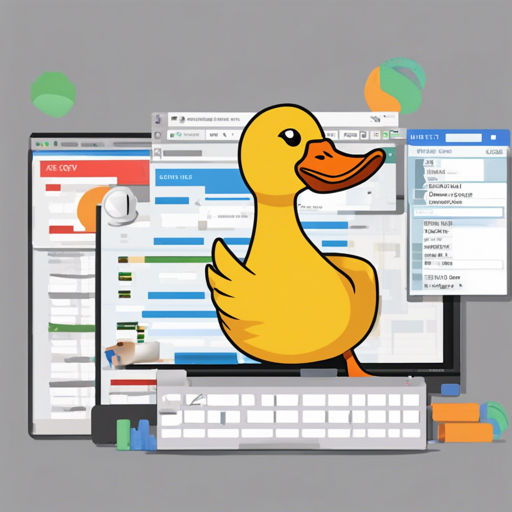WhatTheDuck is an innovative open-source web application made to empower users in managing CSV files effectively. Built on DuckDB, it allows seamless uploading of CSV files, storage in tables, and running SQL queries to extract valuable insights from your data. Whether you need to filter results or combine various datasets using joins, WhatTheDuck has you covered, all while ensuring the data is stored temporarily in memory. Let’s explore how to get started with this handy tool.
Table of Contents
Installation
To get WhatTheDuck up and running on your local machine, you’ll need to install some necessary dependencies. Here’s how:
- Clone the WhatTheDuck repository to your local machine.
- Navigate to the project directory.
- To install dependencies, you can choose one of the following methods:
yarnnpm installUsage
Once the installation is complete, it’s time to start using WhatTheDuck:
- Ensure you have followed the installation steps.
- Run the following command:
quasar devThis will launch the application in development mode, allowing you to access it in your browser at http://localhost:9000 (or a different port if specified). To build the application for production, use:
quasar buildThe production build will be located in the dist directory.
Configuration
The application configuration can be personalized by modifying the quasar.config.js file. For detailed instructions on customizing the configuration, refer to the Configuring quasar.config.js documentation.
Contributing
Your contributions to WhatTheDuck are highly encouraged! Here’s how you can contribute:
- Fork the repository on GitHub.
- Clone your forked repository locally.
- Create a new branch for your feature or bug fix.
- Make the changes, then commit them.
- Push the changes to your forked repository.
- Submit a pull request to the main repository.
License
WhatTheDuck is licensed under the MIT License, allowing you to use, modify, and distribute the application freely according to the license terms.
Troubleshooting
If you encounter issues while running WhatTheDuck, here are a few troubleshooting ideas:
- Ensure that you have installed all dependencies correctly. Double-check your commands.
- If the application doesn’t start, confirm that you are in the right directory and that your environment is set up accurately.
- Refreshing your browser will clear all uploaded data. Always remember to save your results before a refresh.
- If you still face challenges, feel free to seek support or reach out for help.
For more insights, updates, or to collaborate on AI development projects, stay connected with fxis.ai.
Final Thoughts
At fxis.ai, we believe that such advancements are crucial for the future of AI, as they enable more comprehensive and effective solutions. Our team is continually exploring new methodologies to push the envelope in artificial intelligence, ensuring that our clients benefit from the latest technological innovations.

